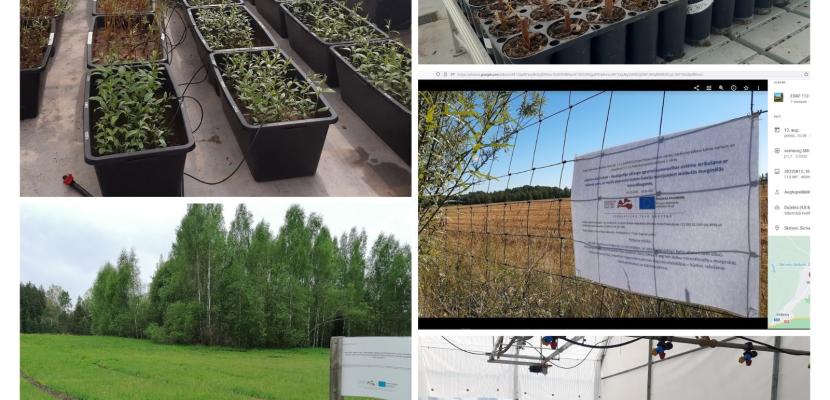
Soil amendment from wood ash and less demanded peat fractions for agroforestry systems

About this good practice
In Latvia there is a number of lands with a low level of organic matter in the soil which currently are not used in agriculture but there is a potential to use it in biomass production. There are limited amount of organic fertilizers with sufficient mineral and organic substances available. There is a need to find effective models in dealing with energy producers waste issues and less demanded peat fractions.
The aim of research done by national institute “Silava” was to review fertilization practices in short-rotation willow plantations and their impact on the biomass yield. The data from the literature were collected, and different doses of various fertilizers were compared. Wood ash, less demanded peat fractions – side products of peat production were used to obtain optimal soil mix for breeding of trees.
During research project, from 2020 – 2023, it was concluded that amendment of peat and wood ash to the soil fosters the growth and health of willow seedlings of Salix alba both in pot/containers crops and on the field.
2 prototypes of soil amendments and 2 prototypes of peat and wood ash substrate were elaborated and tested for manufacturing process.
Main stakeholder and developer of practice is Latvian State Forest Research Institute “Silava”.
Beneficiaries:
- producers who have peat and wood ashes as a byproducts of their production;
- land owners with less fertile soil;
- potential entrepreneurs who would like to develop production of organic soil amendments;
Resources needed
The practice was launched in European Regional Development Fund project. Budget: 329,567.01 EUR.
The materials for manufacturing of amendment were obtained for free. All direct application work was done by 2 workers in 5 working days. Cost of used equipment for manufacturing comprise 15 000 eur.
Evidence of success
The crops fertilized with wood ash and peat amendment showed better growth (5-10%) comparing to control group.
When applying the soil ameliorant - wood ash, the largest variation in sapling height was observed. When applying peat pellets and wood ash, the white willow plantation exhibited the highest sapling survival rate (10-15% higher).
Wood ash and peat can be used for soil improvement to solve the main characteristic marginal soils problems – low organic content and pH value.
Potential for learning or transfer
The practice can be transferred to other countries with similar land properties and materials available as a by-products of production process. Willow (Salix) family is one of the fastest-growing woody energy crops. It has been widely used for biomass energy production in short-rotation plantations, carbon storage in longer rotation, and as a phytoremediation plant. Willows could be cultivated on a wide range of soils, including marginal land.
Practice shows that different side products of energy production and municipal waste from energy production can be used for soil improvement.
Using wood ash as fertilizer can help manage forest replantation sustainably and may represent a green method for dealing with energy producers waste issues;
Wood ash can be used as an alternative to mineral fertilizer in tree plantations in agroforestry.
Developed recipes for soil amendment are suitable for industrial production and technological process is elaborated and can be overtaken.
Further information
Website
Good practice owner
You can contact the good practice owner below for more detailed information.
Latvian State Forest Research Institute Silava (LSFRI Silava)
